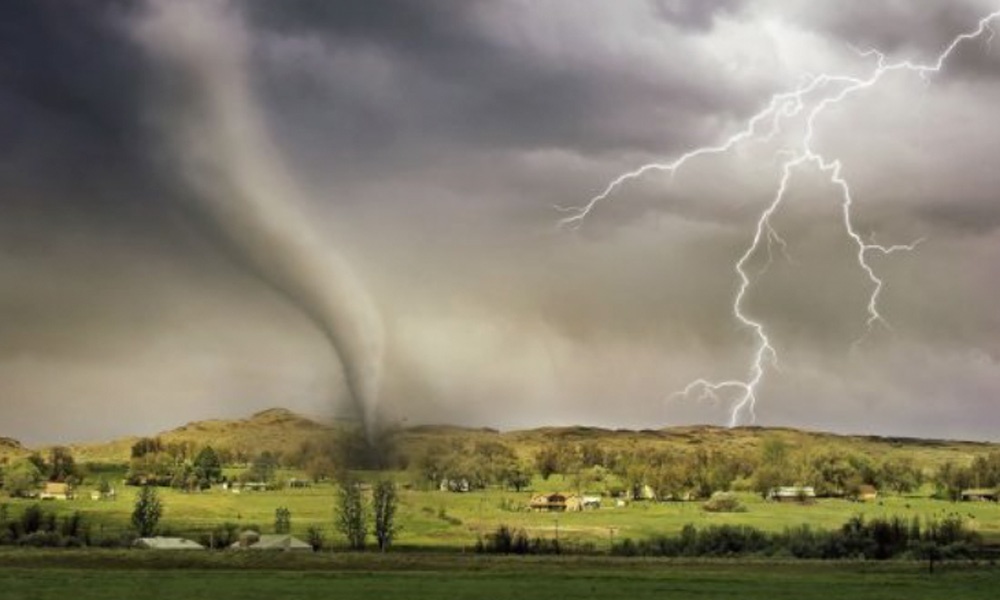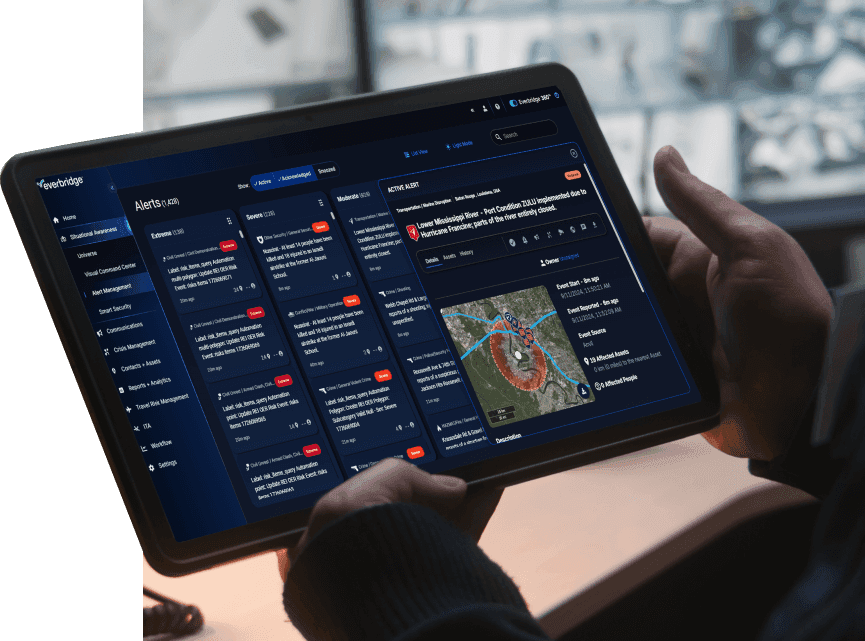Spring is fast approaching, bringing the potential for severe weather that can wreak havoc on businesses across the United States. From tornadoes and hail to thunderstorms and floods, the impact of these events can be devastating for those caught unprepared. To avoid loss of revenue, damage, and business interruption, organizations must act now to protect themselves.
Here’s three key questions to ask yourself about your enterprise’s resilience for the upcoming severe weather season.
Question 1: How good is our emergency plan?
It’s too easy to ask, “Do we have a plan?” The answer to that should be, “Of course!”
The questions to ask are: How good is it? Is it up to date? Does it have everything you need? Have you tested it? Have you implemented it?
An emergency plan is one of the foundational steps to any response. And a good plan is built on an understanding what types of hazards may impact your business, how they impact it, and how you need to respond.
Your emergency plan should be unique and tailored to your business. Think of it like your safety roadmap–it should be well documented and address what actions you will take before, during, and after an event, and who is responsible for carrying them out.
Building your emergency plan starts with a risk assessment. Every business should conduct a risk assessment at least once a year. While you may intuitively know what your risks are, it’s good practice to check in with your insurance company, government emergency services offices, or even do a quick internet search to help you stay on top of the risks for your location.
Once you know those, how does your business line up to mitigate any potential impacts? Three quick ways to think about this are:
- Physical preparation: How do you protect people, buildings, vehicles, equipment, or any other physical assets? This could include investing in storm shutters/doors or flood control devices or even moving assets under a shelter ahead of the storm.
- Technology preparation: How do you protect your data, network, application availability, and IT infrastructure? For example, investing in generated power, uninterrupted power supplies, or surge protection. You could also ensure frequent backups of data and systems and establish a definition of your critical infrastructure.
- Operational preparation: How do you change your business operations when dealing with a potential threat? This might mean modifying operating hours and employee work activity in higher-threat environments (e.g., no one working outside, opening later/closing earlier), or developing hard and soft closure procedures for certain situations.
Once you have built your plan, it should be updated and tested regularly, and employees should be educated and trained.
Question 2: How do we sense danger?
Today, the ability to monitor severe weather conditions is readily available. There are plenty of websites, media agencies, government warning systems, and apps that will alert you for free– right to your mobile device, in many cases.
Smart business operators leverage the tools available to actively monitor their environment. And, when the storms get closer, they monitor more closely. Some of these technologies are becoming so advanced that warning time is increasing. This gives businesses the opportunity to begin planning a day or days ahead of time, allowing to realign business activities, prepare in a way that mitigates impact, notify customers, and ease your organization through it rather than react hastily.
But don’t fall into a false sense of security. There are some hazards that have a very rapid onset and provide little preparation time once detected. For example, the average lead notification time for tornadoes between 2016-2020 was under 9 minutes, which is why paying attention to watches, warnings, and outlooks is important—followed by taking immediate action once alerted.
Question 3: How well do we communicate during a crisis?
You have a great plan. You can see the storms coming. But that does you little good if you can’t communicate effectively with your employees, teams, responders, partners, and/or other stakeholders.
Severe weather events are highly dynamic, which is why what you say, when you say it, and how you communicate it are among the most crucial elements of your preparation and response.
Employees expect to hear from you during a crisis and take your direction. Your preparation creates calm. Calm allows people to receive information and take action better.
When building out great communications in a crisis, you should consider:
- HOW you want to communicate. (e.g., SMS, voice call, audible alerting, radios, text groups, etc.) A good rule of thumb is to leverage more than one channel to ensure the messages are received or in case one of the channels becomes unavailable (For example, if cellular towers go down). If it makes sense for your business, there are great affordable emergency or mass notification applications out there that can streamline this effort significantly.
- WHAT you want to communicate. Pre-populated or written warnings, action statements, etc. can save lots of time when time is the one thing you don’t have. Pre-created statements can be modified on the fly to fit the situation. Not spending time trying to create from scratch can be highly beneficial and ensure that the communications are clear and concise.
- WHEN you want to communicate. Timing is everything. You want to strike that balance between proactive and timely notifications, but not be too early or too late, which can lead to confusion or uselessness. Communicate to create awareness, an update on the situation, set expectations, collect information, and drive actions. Make sure to also think through the “all clear” to let people know when they can resume normal activities.
Make sure employees and other key stakeholders know how you’re going to communicate, test that from time to time, and help them understand why it’s important to pay attention to those notices and take action once communicated.
As an interesting side note, we rely a lot on technology to help us communicate, but technology also fails – especially when community infrastructure is damaged. So, make sure to create and communicate backup communication processes in case the regular channels are unavailable. This could be something as simple as, “If connections go down, we will post a representative at XYZ location tomorrow starting at 10 AM to provide information face to face.”
A final word
Many of the recommendations above take time to develop. If you couldn’t answer the 3 questions easily, the time to remedy that is now. Understanding what can impact you and how and then what to do about it is critical to sustaining your business.
In short, have a great plan, prepare your business, actively monitor your environment, and communicate proactively and diligently with your employees.
As your program matures or becomes more complex, consider using application tools to help streamline and organize your efforts (e.g., enterprise resilience, crisis management, business continuity applications, and/or emergency notification systems).
Finally, these questions and suggestions are not the be all end all. However, by ensuring you have good answers to them, your businesses will start down the path to being better prepared to weather the storms that may come your way.

